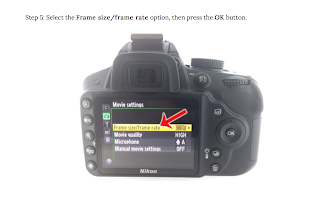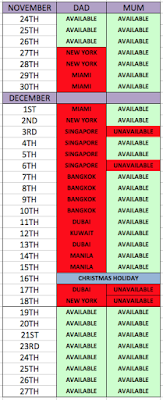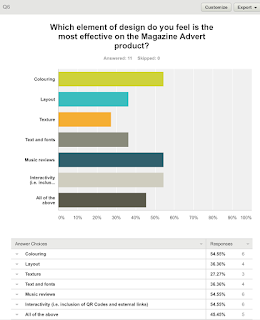A2 Media Studies Coursework Evaluation: Question 4 Response
How did you use media
technologies in the construction and research, planning and evaluation stages?
Media technologies were vital in helping my construction, research, planning and evaluation stages for my final products for this G324 A2 Media Studies specification.
RESEARCH:
Independent and thorough research was the foundation for creating
products that were engaging, intention fulfilling and creative. With my
objective in mind, the early stages of research led me to discovering the rigid
codes and conventions of music videos from different genres. This research was indispensable;
as it helped me better understand the components that make successful products.
Although I knew the genre that I was going to represent in my final product, I
felt as if it was necessary to research other genres as I could use these other
codes and conventions and perhaps challenge and integrate some of them into my
own work. From research, I discovered that there was a convergence of camera
shot types that were predominantly used in R&B music videos, for example,
extreme-close up camera shots were utilised in Chris Brown’s music video for
‘Back To Sleep’ in order to capture the emotion of the artist and his
accompanying actor. I used this research to influence decisions made within my
final product and found that these types of camera shots would enhance the
emotional message and tone that I want to convey within my music video. (Link to Music Video Convention Research)
 At
the beginning of the project, YouTube was an extremely important platform that
allowed me to view different music videos from last years A2 project, as well
as looking at well-known videos from major artists. This observation research helped
my planning and construction of my final media text as I was able to see what
was expected of me by the end of the project, as well as gaining helpful
insights into the overall production and planning of such an intensive project.
To further develop my knowledge and understanding of codes and conventions
expected in alternative genres of music videos, I completed a music video
analysis series that documented my deeper appreciation for the way in which
music videos are constructed – thus enabling me to translate some of these components
that I learnt about into my final construction phase.
At
the beginning of the project, YouTube was an extremely important platform that
allowed me to view different music videos from last years A2 project, as well
as looking at well-known videos from major artists. This observation research helped
my planning and construction of my final media text as I was able to see what
was expected of me by the end of the project, as well as gaining helpful
insights into the overall production and planning of such an intensive project.
To further develop my knowledge and understanding of codes and conventions
expected in alternative genres of music videos, I completed a music video
analysis series that documented my deeper appreciation for the way in which
music videos are constructed – thus enabling me to translate some of these components
that I learnt about into my final construction phase.  |
| Link Examples from my blog |
I
documented each stage of my research on my blog (www.throughthelendsprod.blogspot.com) and I found that Blogger was an effective and
simple way of exhibiting my research stages through it’s easy to use functions
and simple ability to edit the layout to make it easier for audiences to
interact with the website. Until my final year of Media Studies, I had never
used Blogger before as last year during my AS course, I had used WIX.com. However, with this being said, using Blogger was a lot easier to use in comparison to WIX – my development from AS to A2 enabled me to learn how to embed videos onto my website and edit links available on ready-made lists so that it made navigating around my blog easier for audiences.
On a technical level, I researched how to film with different FPS
(Frames Per Second) in order to create smoother footage when I edit segments
with a slow-motion effect. Taking to Google, I also researched how to alter the
FPS on my camera of choice: a NIKON D3200. I found numerous sites and blogs
that helped my awareness of different frame rates when filming and also helped
me to manually change some of the settings. SolveYourTech Link (External Link)
SolveYourTech.com was an extremely useful website
dedicated to my specific camera and how to alter FPS settings. (Insert
screenshots) Because my lens was standard kit, the settings only allowed me to
shoot a video in 60FPS with the dimensions being 1280x 720 – however; I found
that this was fine for when it came to importing my video into Final Cut Pro X.
CONSTRUCTION:
 Throughout the entirety of my construction phase, I shifted between
using an iMac Desktop and my own MacBook Retina 15-inch Pro. My competency of
using Mac software is incredibly high as demonstrated through my engagement
with Mac products for five years – thus I was confident in my ability to
operate the Macintosh systems. I had only recently been introduced to Final Cut
Pro X and Photoshop during AS Level but as my development and experience grew,
I learnt how to develop technical skills such as slow motion editing, overlaying
and succinct quick cut shots in my footage in order to create a complete,
successful product.
Throughout the entirety of my construction phase, I shifted between
using an iMac Desktop and my own MacBook Retina 15-inch Pro. My competency of
using Mac software is incredibly high as demonstrated through my engagement
with Mac products for five years – thus I was confident in my ability to
operate the Macintosh systems. I had only recently been introduced to Final Cut
Pro X and Photoshop during AS Level but as my development and experience grew,
I learnt how to develop technical skills such as slow motion editing, overlaying
and succinct quick cut shots in my footage in order to create a complete,
successful product.
When
filming my video, I utilised a simple kit lens with specs of 18mm-50mm, as I
had prior experience from AS on how to utilise the lens to its greatest
abilities; therefore I didn’t feel like it was necessary to purchase an
alternative expensive lens. The skills that I took from AS that I utilised in
A2 was the experimentation of manually shifting lens focus in order to
exaggerate depth of field in certain scenes within the music video. This was
really successful as demonstrated through a blog post with me experimenting
with transitional footage. Transition Footage Video & Blog Post (My Blog)
Before I started filming, I needed to manually change the white
balance on my camera, something that I hadn’t done at AS Level. The process was
actually quite simple - I stood in front of the camera with a large piece of
white paper to balance out the lighting that the camera would pick up. Altering
the white balance on my NIKON D3200 meant that my footage would capture the
lighting closest to what the naked eye would see, with this being translated
throughout my footage. In terms of audio, I used the monaural built-in microphone
to experiment with sound that I could include in the music video. For example,
for the close-up, wide angled camera shot of the stream, I considered included
the external sound of the water running in the video, however, through my own
evaluation, I felt as if it added too much “realism” to the video – this is an
element that I didn’t want dominating my video, as slow motion camera angles
captures the surrealism of a relationship and the added naturalistic sounds
would distract from this intention.
Once
I had finished filming, I uploaded the footage into Final Cut Pro X where I
started to manage the frames so that it started to form a chronological
structure that I wanted the narrative to focus on. When all of the footage was
uploaded into the editing software, I started to use video filters such as
‘Luma Keyer’ and technical elements of ‘Stabilisation’ and ‘smoothing’. As well
as this, for the slow motion scenes, I learnt very quickly how to modify the
speed by creating custom FPS rates.
As well as creating a music video, I also had to create two
accompanying ancillary products: a DigiPak and a magazine advert. In order to
create these two products, I had to utilise a new programme called
“Illustrator”. This was the first time I had ever used Illustrator and at
first, it was a little challenging; but with support from my teacher and peers,
I started to rapidly enhance and refine my skills, demonstrated through my
newfound comprehension of creating clipping masks, altering images without
changing the resolution, text and font work and working successfully with
vectors. I also developed my technical understanding from AS to A2 by learning
how to download and import fonts to the new software. With both of my ancillary
products, I needed a specific font, so through utilising YouTube and observing
video tutorials, I was able to import and successfully use the font that I
needed to mirror the intricate style of my band.
YouTube was a helpful platform throughout the entire creative
process. I utilised it for research purposes but I also used it to upload my
evaluation responses, rough and final cuts of the music video and audience
feedback. Thankfully I had filmed and exported my film in 1080p so when it came
to uploading my music video to YouTube, the resolution remained the same and
the aesthetic wasn’t changed.
PLANNING:
 In relation to planning, different media technologies helped me to plan
my exploration and development for my final products.
In relation to planning, different media technologies helped me to plan
my exploration and development for my final products.
The first task that I needed to handle was my
time management. I took to the Internet to contact my actors to see if they
would be willing to participate in my music video – I completed this by
utilising Outlook Email (Hotmail). Once I had received confirmation that they
would be more than willing to participate in filming, I then used Microsoft
Excel to formulate a spreadsheet that included specific details of which days
my actors were available to film. My male actor was extremely busy during the
times that I needed to film, so I asked him to provide me with the dates of
which he was travelling so I could create a Microsoft Office Word Document of
his schedule. Time Management: Email Evidence with Excel List (My Blog)
Microsoft
Excel was an extremely useful tool when it came to planning my overall
schedule. I utilised the software to create a Call-Sheet; a spreadsheet that
documented which days I would be filming, what would be happening, the actors
that would be working with me, the specific shot type and description, as well
as the location that I would be filming in.
In comparison to AS, my planning at A2 was incredibly detailed and thorough, this is not to say that I didn’t complete any planning during the first year of the course, but I am saying that I was introduced to new media technologies that helped me to organise and manage my time, actors and creative process.
In
relation to the ancillary product planning, I compiled together multiple blog
posts evidencing my research and exploration of different formats of magazine
adverts and DigiPaks. To further strengthen my understanding of ancillary
products, I also analysed the deeper meanings behind the designs as well as how
different codes and conventions have an effect on audience members – I did this
individual research and analysis because I wanted to thoroughly plan my designs
while using inspiration from authentic band designs.
I
took specific inspiration from my band and their original tour posters and
adverts, focusing on their simple style and colour scheme – this is evidenced
in my ancillary products through my utilisation of the exact font (ITC Mendoza
Roman Book SC) that they use in their designs, as well as the monochromatic
colour scheme.
EVALUATION:
As well as using a variety of different media technologies, ranging
from Final Cut Pro X to YouTube, I also used media technologies and platforms
to aid me in my evaluation of my media products.
 Using the Web 2.0, I created various questionnaires using
SurveyMonkey – an easy platform that enabled me to create forms that would help
me in the development of my final products. The interchangeability of the forms
in SurveyMonkey allowed me to ask both open and closed questions; thus, I was
able to gather quantitative and qualitative data. Responses that I gathered
from the questionnaires meant that I was able to make changes to my products in
order to satisfy the opinions of my audience demographic. To complement the use
of SurveyMonkey, I also utilised the social media platform, Facebook, in order to
advertise the link that would redirect my audience demographic to the
questionnaires. I decided to use Facebook as it is a platform that is utilised
daily by my audience demographic, thus, I was confident in gathering an appropriate
amount of responses to aid the development of my piece.
Using the Web 2.0, I created various questionnaires using
SurveyMonkey – an easy platform that enabled me to create forms that would help
me in the development of my final products. The interchangeability of the forms
in SurveyMonkey allowed me to ask both open and closed questions; thus, I was
able to gather quantitative and qualitative data. Responses that I gathered
from the questionnaires meant that I was able to make changes to my products in
order to satisfy the opinions of my audience demographic. To complement the use
of SurveyMonkey, I also utilised the social media platform, Facebook, in order to
advertise the link that would redirect my audience demographic to the
questionnaires. I decided to use Facebook as it is a platform that is utilised
daily by my audience demographic, thus, I was confident in gathering an appropriate
amount of responses to aid the development of my piece.
As well as this, Facebook opened up opportunities for my friends all
over the world to interact with my music video and ancillary products. These expansive
responses from Bangkok to Dubai allowed me to infer if there were any cultural
differences that affected the responses from my target audience. However, from
looking and considering my feedback, there was no indication that cultural
influences from these two areas had any effect in the way in which my audience
received my media text.
Further media technologies were used in my evaluation stages in the
form of voice recordings and voice-overs of filmed progress that I underwent in
Final Cut Pro X. Podcasts allowed me to prove and evidence my learning and
understanding of the processes that I went through in the construction of my
final products, with voice overs specifically justifying and evaluating my
construction process, along with filmed evidence of my development and
exploration. These forms were extremely successful, as it proved that I was not
only constructing my final products, but I was also learning from my
experiences.





